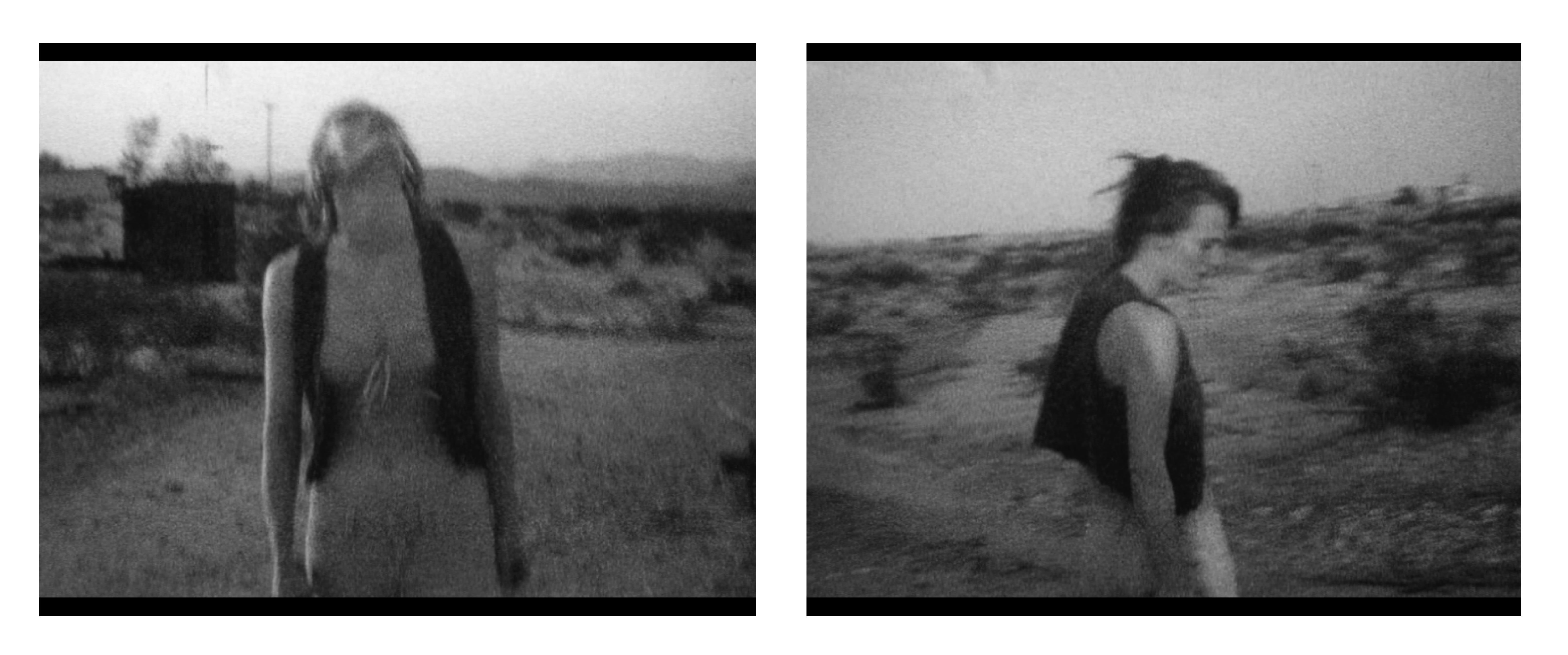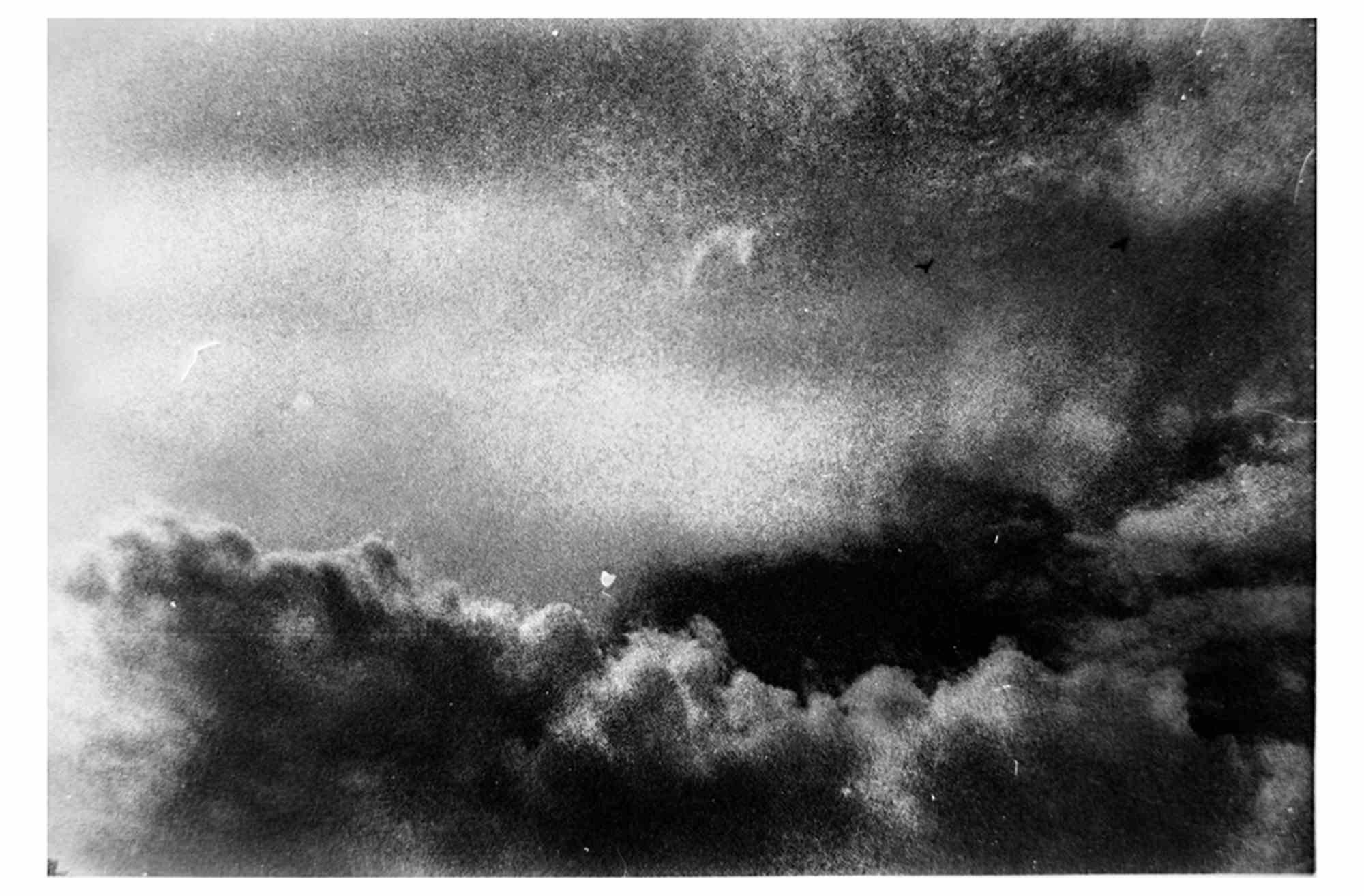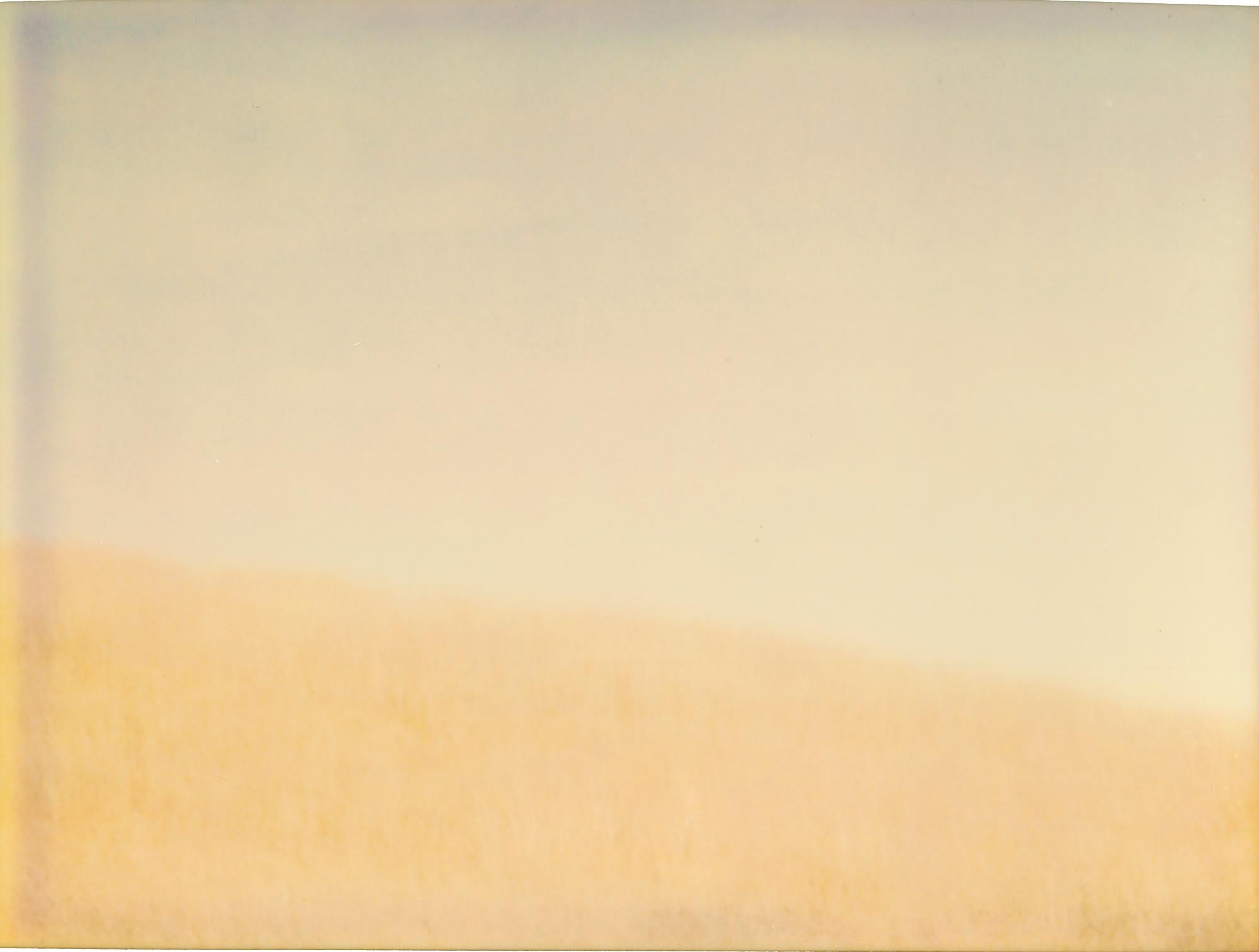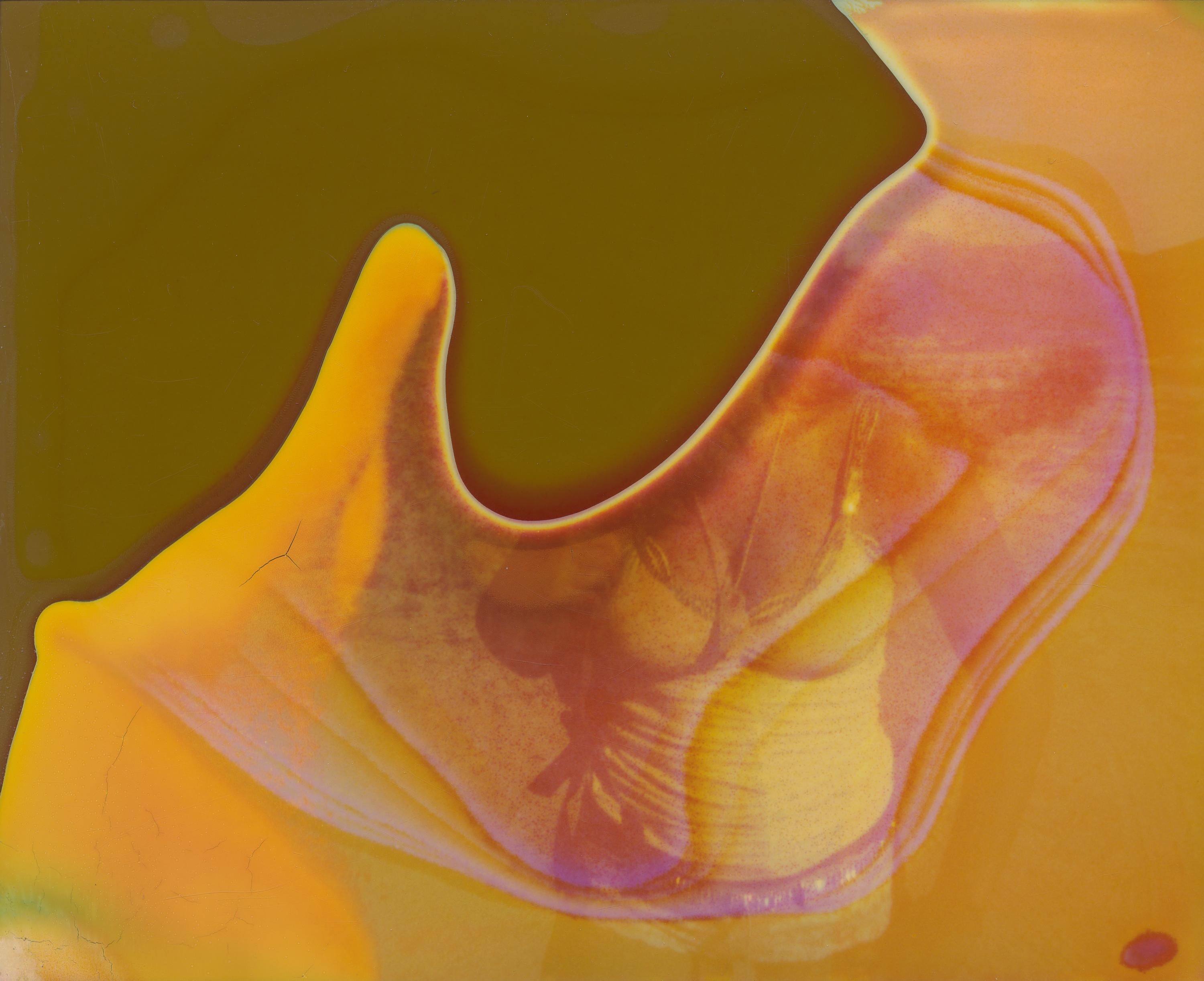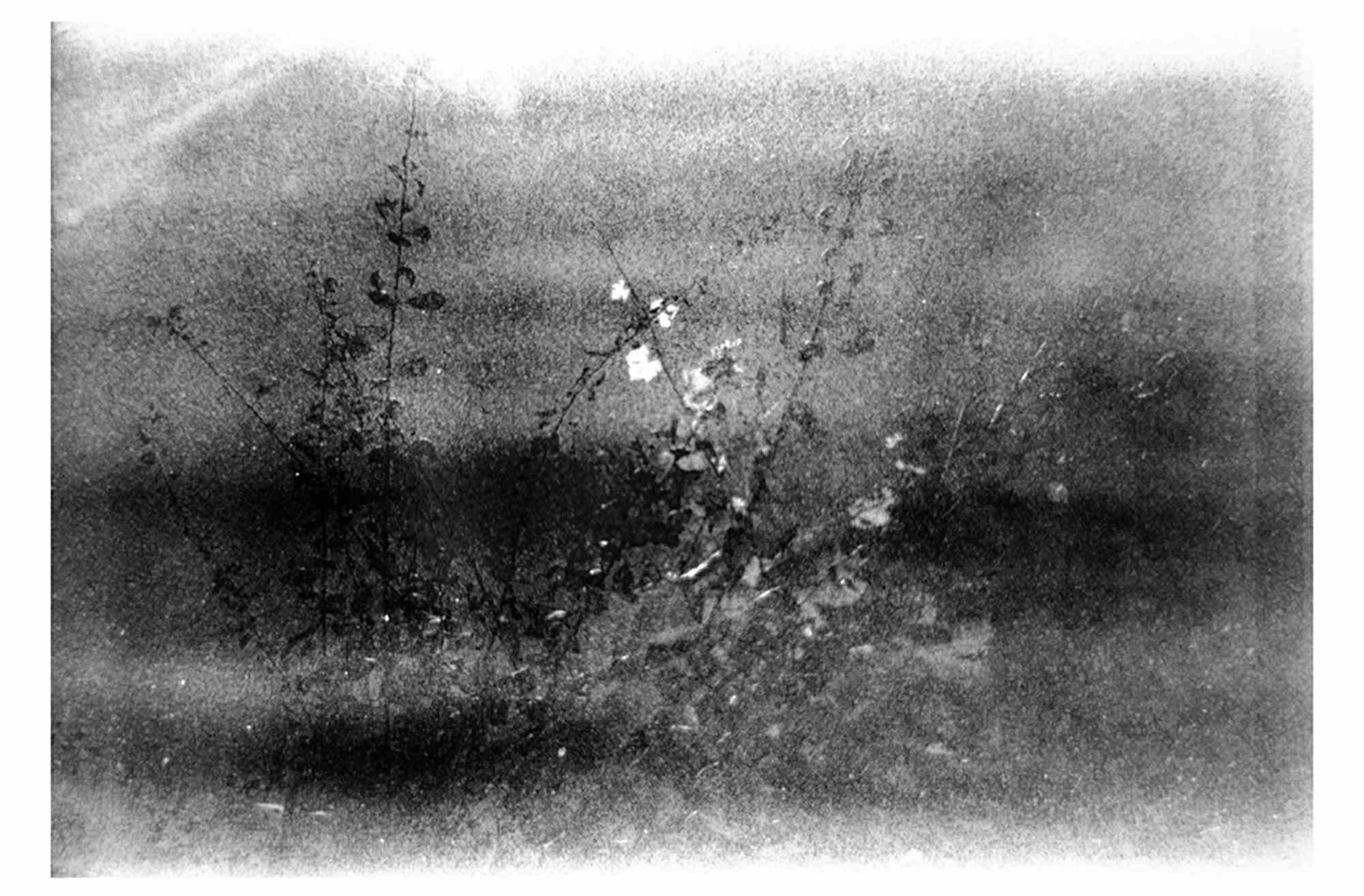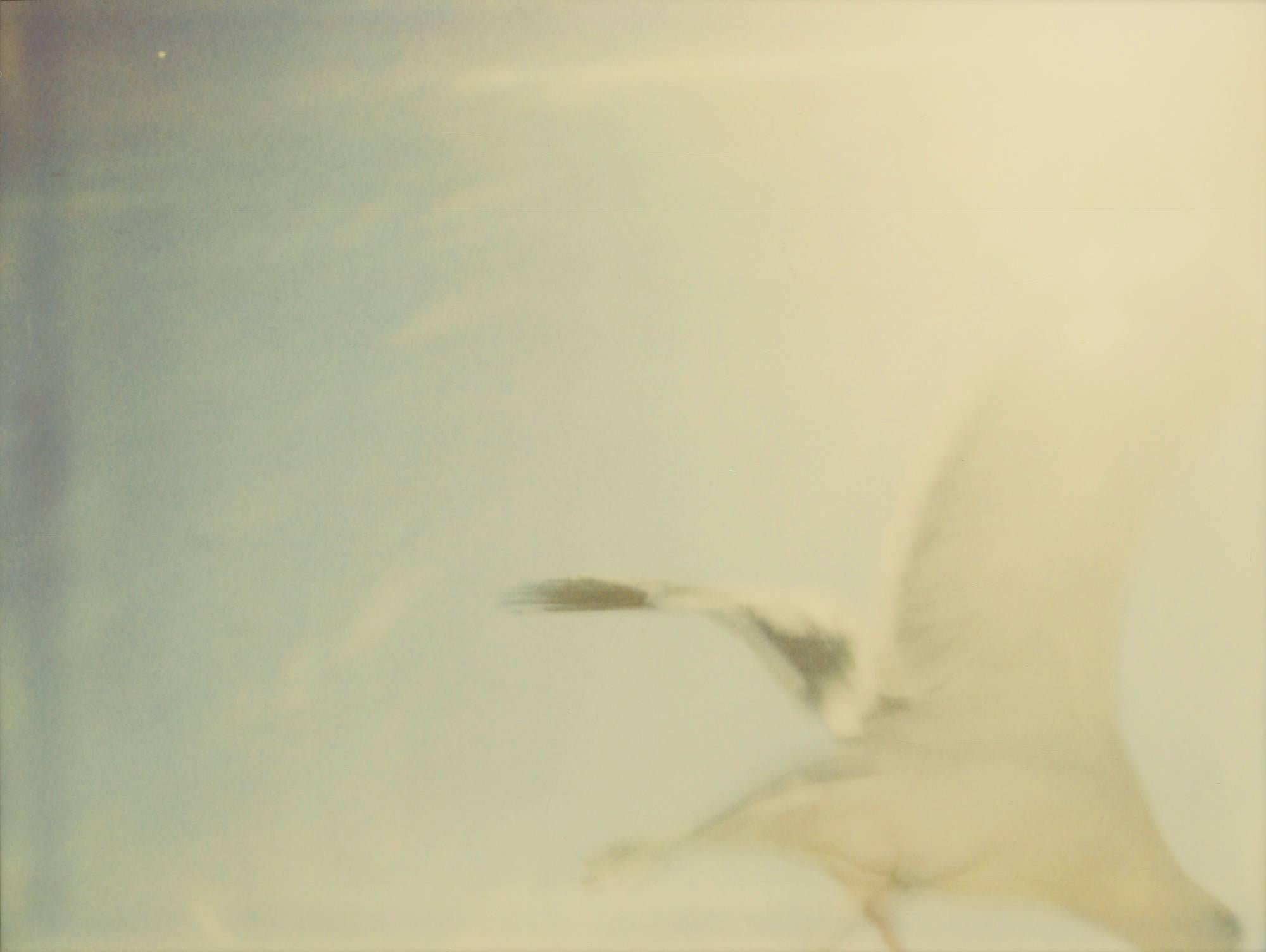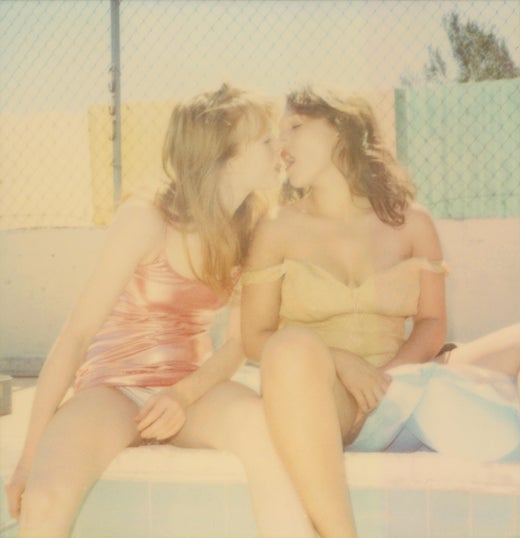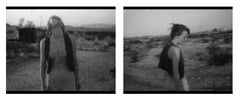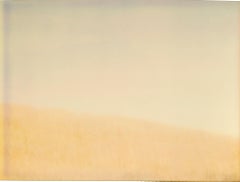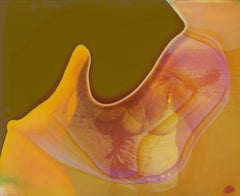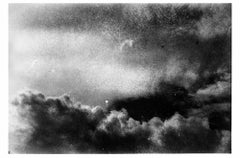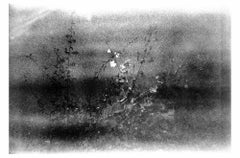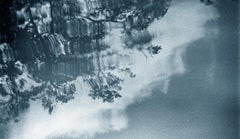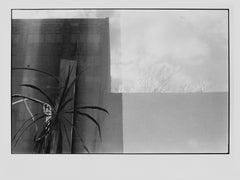Items Similar to Like the Wind (Till Death do us Part) - super-8, analog
Want more images or videos?
Request additional images or videos from the seller
1 of 2
Stefanie SchneiderLike the Wind (Till Death do us Part) - super-8, analog2005
2005
$950
£725.71
€833.76
CA$1,358.30
A$1,496.53
CHF 774.69
MX$18,018.56
NOK 9,809.48
SEK 9,215.38
DKK 6,225.63
About the Item
Like the Wind (Till Death Do Us part) - 2005
20x75cm,
Edition of 10, plus 2 Artist Proofs.
Archival Print based on the Super-8 footage.
Certificate and signature label.
Artist Inventory No S-8-001.
Not mounted.
On offer is a piece from the movie: Till Death do Us part
'Till death do us part' an episode of the '29 Palms, CA' project. A film shot on Polaroid stills combined with Super 8 film sequences.
'Till Death Do Us Part' is the story of two young lovers, lonely souls escaping the abuse of reality into each other. Imagine a stranger suddenly in your path, you can just be silent with, and you feel you have known her forever. This is the experience of Cristal and Margarita, that begins when Cristal picks her up hitchhiking on a lonely dessert road. A runaway from a cruel older brother and a broken family, Margarita is searching on the edge of the shadows for a home. Cristal was also a lonely child and already dangerously close to vanishing when she finds Margarita. For her it is the begging of life. When she finds Margarita, she finds herself, she feels for the first time and discovers that she is not invisible after all.
The childlike, roadside life they make together is a dream that they truly believe will last forever, and with the naive joy of beginners, they dive in, never sensing danger. When two lost souls become one and share everything, do they loose themselves further or do they become whole at last? When a girl has no home, no anchor, can she combine thrive with another? Once a human heart wakes up from isolation for the first time, enchanted by a reflection in love's mirror, can the dreamer fall asleep again, or must she wander searching to find it again forever?
An artistic triumph for Schneider, this piece floats deeper into her exploration of the colors of the human psyche, separation, relationship, androgyny and the fringes of social reality.
The Californian desert light and the vintage colors of Polaroid create a unforgettable atmosphere in the abandoned trailer park.
Austen Tate gives Margarita her voice in poetry and Daisy McCrackin gives Cristal her sound in music.
Stefanie Schneider received her MFA in Communication Design at the Folkwang Schule Essen, Germany. Her work has been shown at the Museum for Photography, Braunschweig, Museum für Kommunikation, Berlin, the Institut für Neue Medien, Frankfurt, the Nassauischer Kunstverein, Wiesbaden, Kunstverein Bielefeld, Museum für Moderne Kunst Passau, Les Rencontres d'Arles, Foto -Triennale Esslingen.
“It was Stefanie Schneider, who inspired me to start the company THE IMPOSSIBLE PROJECT after seeing her work, which seems to achieve the possible from the impossible, creating the finest of art out of the most basic of mediums and materials. Indeed, after that one day, I was so impressed with her photography that I realized Polaroid film could not be allowed to disappear. Being at the precise moment in time where the world was about to lose Polaroid, I seized the moment and have put all my efforts and passion into saving Polaroid film. For that, I thank Stefanie Schneider almost exclusively, who played a bigger role than anyone in saving this American symbol of photography.”
–Florian Kaps, March 8th 2010 (“Doc” Dr. Florian Kaps, founder of “The Impossible Project”)
Wabi-sabi (侘寂) represents a comprehensive Japanese world view or aesthetic centered on the acceptance of transience and imperfection. The aesthetic is sometimes described as one of beauty that is imperfect, impermanent, and incomplete.
If an object or expression can bring about, within us, a sense of serene melancholy and a spiritual longing, then that object could be said to be wabi-sabi. Wabi-sabi nurtures all that is authentic by acknowledging three simple realities: nothing lasts, nothing is finished, and nothing is perfect.
I purposely use expired film because I love the combination of bringing multiple aspects together, the time, the film, the storage, the source and using what is officially obsolete is more challenging. The essence of imagination is our dreams.
- Creator:Stefanie Schneider (1968, German)
- Creation Year:2005
- Dimensions:Height: 7.88 in (20 cm)Width: 29.53 in (75 cm)Depth: 0.04 in (1 mm)
- More Editions & Sizes:50x49cm, Edition of 10, plus 2 Artist ProofsPrice: $700
- Medium:
- Movement & Style:
- Period:
- Condition:
- Gallery Location:Morongo Valley, CA
- Reference Number:Seller: STSCH #1001stDibs: LU652314629742
Stefanie Schneider
Stefanie Schneider received her MFA in Communication Design at the Folkwang Schule Essen, Germany. Her work has been shown at the Museum for Photography, Braunschweig, Museum für Kommunikation, Berlin, the Institut für Neue Medien, Frankfurt, the Nassauischer Kunstverein, Wiesbaden, Kunstverein Bielefeld, Museum für Moderne Kunst Passau, Les Rencontres d'Arles, Foto -Triennale Esslingen., Bombay Beach Biennale 2018, 2019.
About the Seller
4.9
Platinum Seller
Premium sellers with a 4.7+ rating and 24-hour response times
Established in 1996
1stDibs seller since 2017
1,043 sales on 1stDibs
Typical response time: 3 hours
- ShippingRetrieving quote...Shipping from: Morongo Valley, CA
- Return Policy
Authenticity Guarantee
In the unlikely event there’s an issue with an item’s authenticity, contact us within 1 year for a full refund. DetailsMoney-Back Guarantee
If your item is not as described, is damaged in transit, or does not arrive, contact us within 7 days for a full refund. Details24-Hour Cancellation
You have a 24-hour grace period in which to reconsider your purchase, with no questions asked.Vetted Professional Sellers
Our world-class sellers must adhere to strict standards for service and quality, maintaining the integrity of our listings.Price-Match Guarantee
If you find that a seller listed the same item for a lower price elsewhere, we’ll match it.Trusted Global Delivery
Our best-in-class carrier network provides specialized shipping options worldwide, including custom delivery.More From This Seller
View AllLike the Wind II (Till Death Do Us Part) - incl. the book A HALF FORGOTTEN DREAM
By Stefanie Schneider
Located in Morongo Valley, CA
Like the Wind II (Till Death Do Us Part) - 2008
23x53.5cm,
Edition of 10, plus 2 Artist Proofs.
Archival C-Print, based on the 2 original Super-8 Stills.
Certificate and Signatur...
Category
Early 2000s Contemporary Color Photography
Materials
Archival Paper, Photographic Paper, C Print, Color, Polaroid
The Field (Musica Poetica) - analog
By Stefanie Schneider
Located in Morongo Valley, CA
The Field (Musica Poetica) - 1997
44x59cm,
Edition 4/10.
Analog C-Print, hand-printed by the artist, based on the original Polaroid.
Certificate and Signature label.
Artist In...
Category
1990s Outsider Art Portrait Photography
Materials
Archival Paper, Photographic Paper, C Print, Color, Polaroid
Living in a Dream (Till Death do us Part) - Contemporary, Polaroid, Women
By Stefanie Schneider
Located in Morongo Valley, CA
Living in a Dream (Till Death do us Part) - 2005
20x20cm,
Edition of 10,
Archival C-Print print, based on the Polaroid.
Certificate and Signature label, artist Inventory No. 9781.
Not mounted.
on offer is a piece from the movie "Till Death do us Part"
Stefanie Schneider’s Till Death Do Us Part
or “There is Only the Desert for You.”
BY DREW HAMMOND
Stefanie Schneider’s Til Death to Us Part is a love narrative that comprises three elements:
1.
A montage of still images shot and elaborated by means of her signature technique of using Polaroid formats with outdated and degraded film stock in natural light, with the resulting im ages rephotographed (by other means) enlarged and printed in such a way as to generate further distortions of the image.
2.
Dated Super 8 film footage without a sound track and developed by the artist.
3.
Recorded off-screen narration of texts written by the actors or photographic subjects, and selected by the artist.
At the outset, this method presupposes a tension between still and moving image; between the conventions about the juxtaposition of such images in a moving image presentation; and, and a further tension between the work’s juxtaposition of sound and image, and the conventional relationship between sound and image that occurs in the majority of films. But Till Death Do Us Part also conduces to an implied synthesis of still and moving image by the manner in which the artist edits or cuts the work.
First, she imposes a rigorous criterion of selection, whether to render a section as a still or moving image. The predominance of still images is neither an arbitrary residue of her background as a still photographer—in fact she has years of background in film projects; nor is it a capricious reaction against moving picture convention that demands more moving images than stills. Instead, the number of still images has a direct thematic relation to the fabric of the love story in the following sense. Stills, by definition, have a very different relationship to time than do moving images. The unedited moving shot occurs in real time, and the edited moving shot, despite its artificial rendering of time, all too 2009often affords the viewer an even greater illusion of experiencing reality as it unfolds. It is self-evident that moving images overtly mimic the temporal dynamic of reality.
Frozen in time—at least overtly—still photographic images pose a radical tension with real time. This tension is all the more heightened by their “real” content, by the recording aspect of their constitution. But precisely because they seem to suspend time, they more naturally evoke a sense of the past and of its inherent nostalgia. In this way, they are often more readily evocative of other states of experience of the real, if we properly include in the real our own experience of the past through memory, and its inherent emotions.
This attribute of stills is the real criterion of their selection in Til Death Do Us Part where consistently, the artist associates them with desire, dream, memory, passion, and the ensemble of mental states that accompany a love relationship in its nascent, mature, and declining aspects.
A SYNTHESIS OF MOVING AND STILL IMAGES BOTH FORMAL AND CONCEPTUAL
It is noteworthy that, after a transition from a still image to a moving image, as soon as the viewer expects the movement to continue, there is a “logical” cut that we expect to result in another moving image, not only because of its mise en scène, but also because of its implicit respect of traditional rules of film editing, its planarity, its sight line, its treatment of 3D space—all these lead us to expect that the successive shot, as it is revealed, is bound to be another moving image. But contrary to our expectation, and in delayed reaction, we are startled to find that it is another still image.
One effect of this technique is to reinforce the tension between still and moving image by means of surprise. But in another sense, the technique reminds us that, in film, the moving image is also a succession of stills that only generate an illusion of movement. Although it is a fact that here the artist employs Super 8 footage, in principle, even were the moving images shot with video, the fact would remain since video images are all reducible to a series of discrete still images no matter how “seamless” the transitions between them.
Yet a third effect of the technique has to do with its temporal implication. Often art aspires to conflate or otherwise distort time. Here, instead, the juxtaposition poses a tension between two times: the “real time” of the moving image that is by definition associated with reality in its temporal aspect; and the “frozen time” of the still image associated with an altered sense of time in memory and fantasy of the object of desire—not to mention the unreal time of the sense of the monopolization of the gaze conventionally attributed to the photographic medium, but which here is associated as much with the yearning narrator as it is with the viewer.
In this way, the work establishes and juxtaposes two times for two levels of consciousness, both for the narrator of the story and, implicitly, for the viewer:
A) the immediate experience of reality, and
B) the background of reflective effects of reality, such as dream, memory, fantasy, and their inherent compounding of past and present emotions.
In addition, the piece advances in the direction of a Gesammtkunstwerk, but in a way that reconsiders this synaesthesia as a unified complex of genres—not only because it uses new media that did not exist when the idea was first enunciated in Wagner’s time, but also because it comprises elements that are not entirely of one artist’s making, but which are subsumed by the work overall. The totality remains the vision of one artist.
In this sense, Till Death Do Us Part reveals a further tension between the central intelligence of the artist and the products of other individual participants. This tension is compounded to the degree that the characters’ attributes and narrated statements are part fiction and part reality, part themselves, and part their characters. But Stefanie Schneider is the one who assembles, organizes, and selects them all.
THE RELATIONSHIP BETWEEN THIS IDEA (above) AND PHOTOGRAPHY
This selective aspect of the work is an expansion of idea of the act of photography in which the artistic photographer selects that which is already there, and then, by distortion, definition or delimitation, compositional and lighting emphasis, and by a host of other techniques, subsumes that which is already there to transform it into an image of the artist’s contrivance, one that is no less of the artist’s making than a work in any other medium, but which is distinct from many traditional media (such as painting) in that it retains an evocation of the tension between what is already there and what is of the artist’s making. Should it fail to achieve this, it remains, to that degree, mere illustration to which aesthetic technique has been applied with greater or lesser skill.
The way Til Death Do Us Part expands this basic principle of the photographic act, is to apply it to further existing elements, and, similarly, to transform them. These additional existing elements include written or improvised pieces narrated by their authors in a way that shifts between their own identities and the identities of fictional characters. Such characters derive partially from their own identities by making use of real or imagined memories, dreams, fears of the future, genuine impressions, and emotional responses to unexpected or even banal events. There is also music, with voice and instrumental accompaniment. The music slips between integration with the narrative voices and disjunction, between consistency and tension. At times it would direct the mood, and at other times it would disrupt.
Despite that much of this material is made by others, it becomes, like the reality that is the raw material of an art photo, subsumed and transformed by the overall aesthetic act of the manner of its selection, distortion, organization, duration, and emotional effect.
* * *
David Lean was fond of saying that a love story is most effective in a squalid visual environment. In Til Death Do Us Part, the squalor of the American desert...
Category
Early 2000s Contemporary Color Photography
Materials
Archival Paper, Photographic Paper, C Print, Color, Polaroid
I wie Ikarus - Stranger than Paradise
By Stefanie Schneider
Located in Morongo Valley, CA
I wie Ikarus (Stranger than Paradise), 1999
43x49cm
Edition of 10,
analog C-Print, hand-printed by the artist,
based on the original Polaroid
Certificate and Signature label
artis...
Category
1990s Contemporary Portrait Photography
Materials
C Print, Color, Polaroid, Archival Paper
Untitled (Fairytales) - analog
By Stefanie Schneider
Located in Morongo Valley, CA
Untitled (Fairytales) - 2006,
48x59cm,
Edition 2/5.
Analog C-Print, hand-printed by the artist on Fuji Crystal Archive Paper, matte finish, based on the original Polaroid.
Certi...
Category
Early 2000s Contemporary Color Photography
Materials
Archival Paper, Photographic Paper, C Print, Color, Polaroid
Untitled - Fairytales, analog
By Stefanie Schneider
Located in Morongo Valley, CA
'Untitled' (Fairytales) - 2006,
48x59cm, Edition 2/5,
analog C-Print, hand-Printed by the artist on Fuji Crystal Archive Paper, matte finish, based on a Polaroid,
Certificate and ...
Category
Early 2000s Contemporary Color Photography
Materials
Photographic Paper, C Print, Color, Polaroid
You May Also Like
Expired_14_2020 - Photograph by Serena Zeppilli
Located in Roma, IT
This photograph Expired_14_2020 was taken by the Italian photographer Serena Zeppilli.
It is part of the series "I was looking for something that I...
Category
21st Century and Contemporary Contemporary Figurative Photography
Materials
Photographic Paper
Expired_08_2020 -Photograph by Serena Zeppilli - 2020
Located in Roma, IT
This photograph Expired_08_2020 was taken by the Italian photographer Serena Zeppilli.
It is part of the series "I was looking for something that I...
Category
21st Century and Contemporary Modern Figurative Photography
Materials
Photographic Paper
Elusive XXIV, Photograph, Archival Ink Jet
By Katina Desmond
Located in Yardley, PA
The images in Katina Desmond's "Elusive" series are uniquely toned by the artist and dye-infused onto sheer matte aluminum surface. Contemporary float mounting, ready to hang. The al...
Category
2010s Other Art Style Color Photography
Materials
Archival Ink
Untitled (0302-37), Abstract Photograph on Gelatin Print, 2011
By Koyo Tamaki
Located in Boston, MA
Artist Commentary:
Koyo's photograph of reflections on a glass window resembles the composition of an abstract painting with large, flat shapes and elegant grays.
Keywords: photogra...
Category
21st Century and Contemporary Landscape Photography
Materials
Silver Gelatin
Untitled (0322-11), Silver Gelatin Print, 2011
By Koyo Tamaki
Located in Boston, MA
Artist Commentary:
Koyo creates an elegant, intricate composition with deep grays against soft, hazy white in this photograph of plants against a window.
Keywords: photography, natu...
Category
21st Century and Contemporary Abstract Photography
Materials
Silver Gelatin
Elusive XXII, Photograph, Archival Ink Jet
By Katina Desmond
Located in Yardley, PA
The images in Katina Desmond's "Elusive" series are uniquely toned by the artist and dye-infused onto sheer matte aluminum surface. Contemporary float mounting, ready to hang. The al...
Category
2010s Other Art Style Color Photography
Materials
Archival Ink
More Ways To Browse
Linoleum Block Print
Los Angeles Poster
Magdalena Abakanowicz
Marquis De Sade
Mckenney And Hall Lithograph
Mies Van Der Rohe Print
Munich Olympics Poster
Niccolo Vanni
Okinawa Vintage
Original Movie Lobby Card
Parrots Engraving
Picasso Ceramic Pitcher
Schooner Art
Vintage British Rail
Vintage Bus Stop
Vintage Fortune Magazine Covers
Wpa Lithograph
1976 Bicentennial
